Many tourists opt for Hakone and Nikko over Kyoto and Nara, as the perfect destinations for a short trip from Tokyo to experience the “autumn myths” of the land of Japan.
[rpi]
My Japanese friend jokingly said that Japanese people have almost no concept of “Pictures being for illustration purpose only”, and advertised products are equivalent to that in reality. It is hard to believe sometimes that the places we see in spectacular travel photos on the Internet are real, but Japan truly is “a real life wonderland”. I can vouch for its beauty, so I visited Japan and brought some popular autumn destination postcards in the land of the rising sun. Discover the exquisite vision that is the Katsura River in Kyoto, where the brilliantly red trees cast incredible silhouettes on the crystal-clear water, Irohazaka – the snazzy sloping road that zigzags through Nikko, or on a dry autumn day take a wander around Ashinoko Lake – the infamous lake in the Hakone mountain region. My friend suggested that I should visit to experience autumn in Japan and prove that it’s not just a “myth”. So, I made the decision to go.
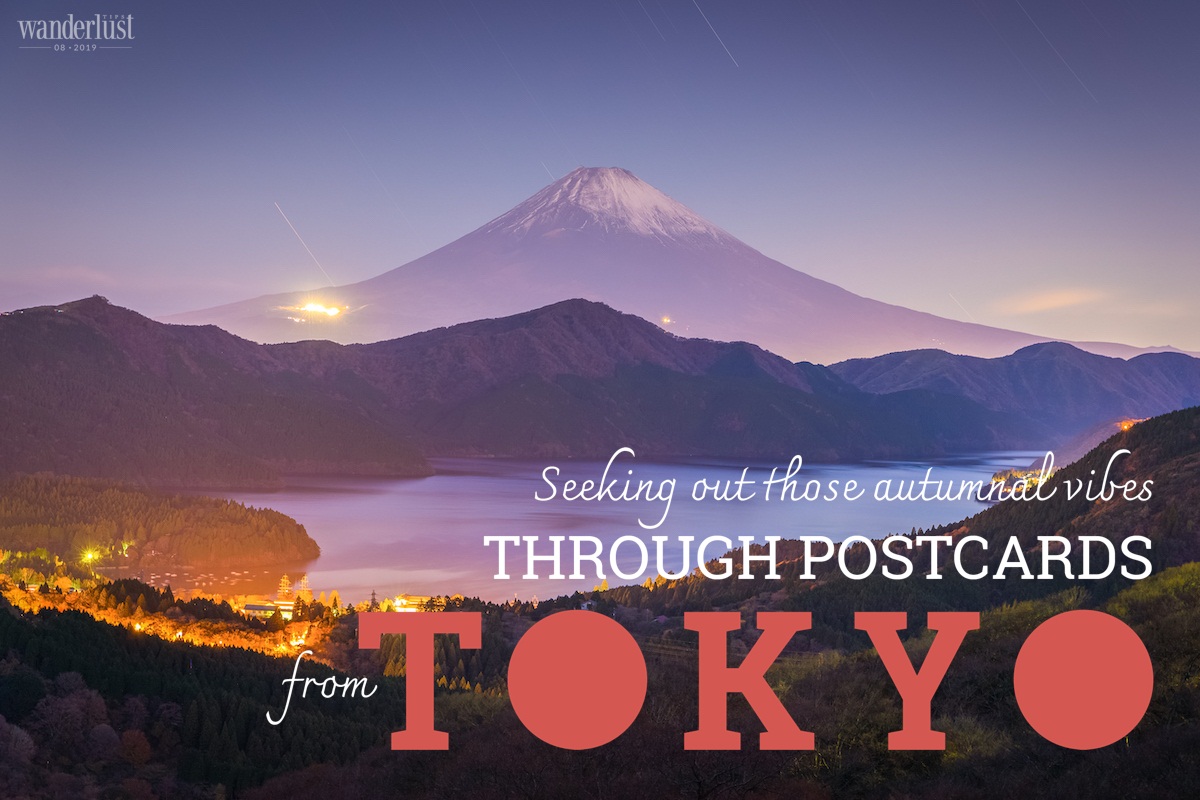
HAKONE: THE AUTUMN OF COMICS AND HAIKU POETRY
Hakone is located on the western side of Honshu and takes 1.5 hours from Tokyo by train. In mid-November, the Kanto region experiences hot, humid weather that is sometimes overcast and prone to outbreaks of drizzle. Although the weather is not always pleasant, it is the best time of year to admire the red leaves of autumn in Hakone.
Hakone is a small town with a very pleasant atmosphere, even in the peak tourist season. Nestled on the rolling slopes, the beautiful Japanese houses with their traditional bamboo doors harbour such a tranquil beauty amidst the dense crimson canopies, the gravelled garden will be gradually covered with a layer of fallen maple leaves. From the centre of Hakone, you can use a free pass which allows you to take a tour to the most famous tourist attractions. Not to be missed during this tour is a ride on the Tozan mountain train. The train departs from Hakone-Yumoto Station to Gora Station. Interestingly, “Hakone Tozan Train” topped the leader board as the most beautiful railway in Asia.
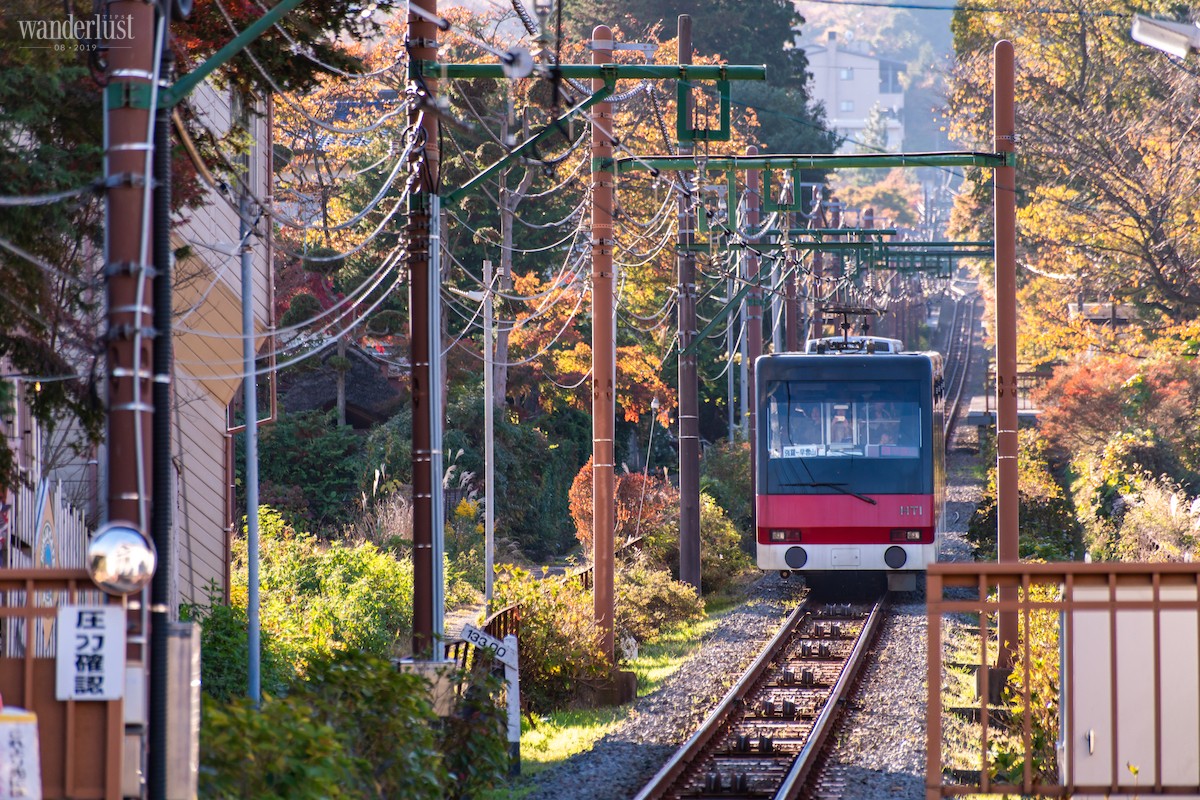
The trains play a signifcant role in Japanese culture and tourism. The Japanese are interested in the images of beautifully coloured electric trains on the zigzagging railways. I wondered if whether because of the abundance of stunning trains in Hakone or because of “Train Otaku” culture, the Tozan Train becomes so special. In June, many people want to travel to Hakone to take the Tozan Line to marvel at the hydrangea forest from the train’s windows. The red painted locomotive running through beautiful hydrangeas in the rain bears a resemblance to the scene I saw in an anime that has long been a symbol of Hakone. Summer and late autumn are the best times to fully experience this special train journey. The train is tinted by the momiji (meaning red leaves), making its mark on the mountainsides, and the Tozan Train is covered with crimson maple leaves, as passengers immerse themselves in the breath-taking surrounding scenery. Hakone-Yumoto is around 400m lower than Gora compared to the sea level, so you will feel like you are climbing the mountains when crossing the forests. The foliage stretches out adjacent to the railway, so close that you could reach out of the window to touch the dewy red leaves. When the train crosses the iron bridge connecting the two hills, where the fallen maple leaves rustle in the breeze, many will fully understand the reason why Hakone’s autumnal beauty is so idyllic, yet the most vivid in Japan.
From Gora Station, it is easy to take a bus to the cable cars. Hakone Ropeway passes through Kami Mountain to reach Ashinoko Lake. I am not interested in taking the ropeway as much as a bus, but this is the best opportunity to admire the Mount Fuji, even in the gloomy weather. Looking down from the cable car, the colours of the Kami mountains and trees along with the grasslands of Sengokuhara are entwined like a striking oil painting. Notably, Mount Fuji asserts a whimsical beauty, seemingly elegant and majestic on a foggy autumn day.
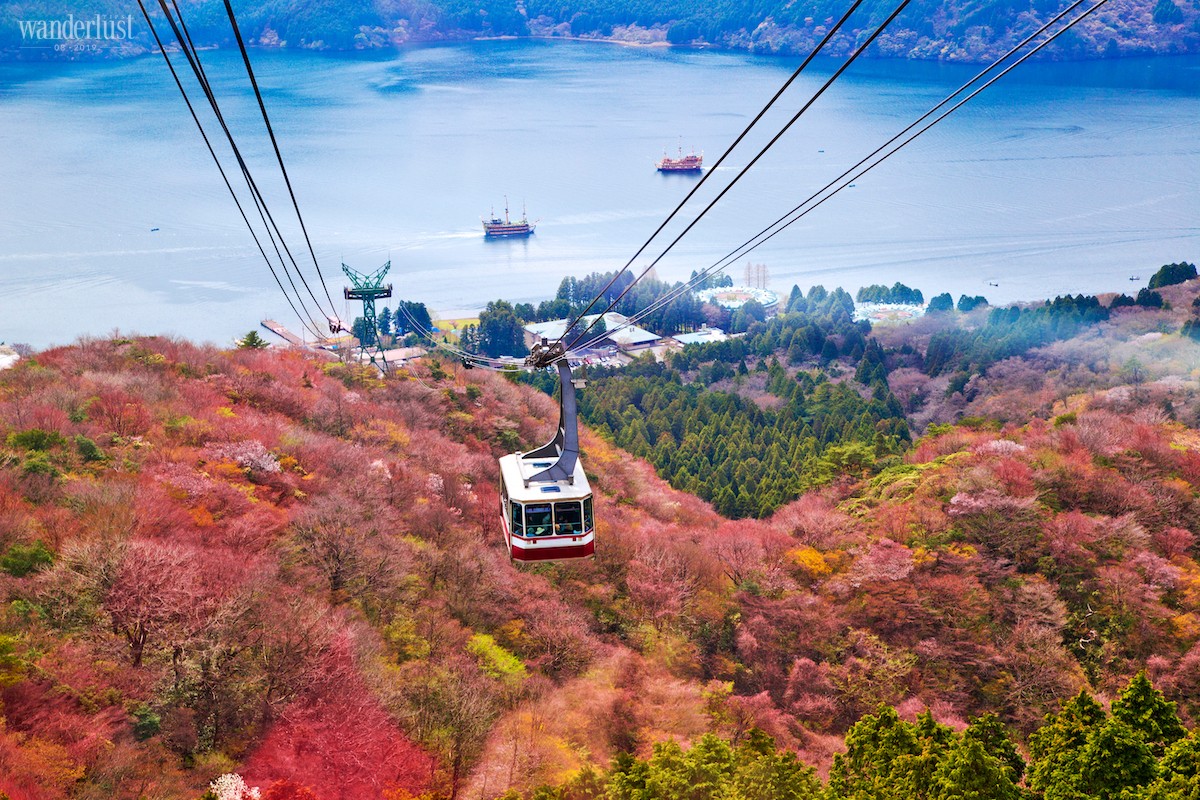
At the end of the cable car station is the most famous scene when you picture Hakone – Ashinoko Lake, with ancient three-storey boats leisurely drifting on the calm water. Despite the slightly frosty air in late autumn, many gather on the deck to admire the magnifcent beauty of the endless rows of red maple trees that embrace the cerulean water like a precious stone covered with a soft layer of velvet. I think the best time to see Ashinoko Lake is in the afternoon. The last rays of sunshine dance with the layers of mist on the surface of the water, making the remote maple forest and even the giant torii gate of Hakone Shrine seem even more enchanted. It is a scene of such beauty that the impressive pictures on postcards can not do justice. I don’t remember clearly, but I must have blurted out: “Wow, here is it.”
I could feel my ears stinging due to the frosty air from the sightseeing tour on the lake. Starting from the Haya River, I took a stroll along the slopes. In Hakone, the buses only operate until 5pm and almost all shops will close at 7pm. The shiny cars on the busy streets also disappear, making the alluring town fall into a sense of bizarre contemplation. On the serene slope, each stream of smoke rising from the drainage ditch on both sides of the road is illuminated by the beige lights. It is a natural hot mineral or onsen. The town of Hakone is renowned for an abundance of onsens. Hot water ripples through every winding slope of the town merging into the Haya River. As I sat on the roadside bench, amidst the slight smoke that was growing from the cold night and lifted my head, I saw the dense foliage of momiji with its signature red colour, I then thought of Shiki’s haiku poem printed on the Japanese autumn postcard: “A strange beauty / Everyone feels jealous / The fallen red maple leaves”. Perhaps the “autumn myths” of Japan also began from such an acquainted and astonishing view.
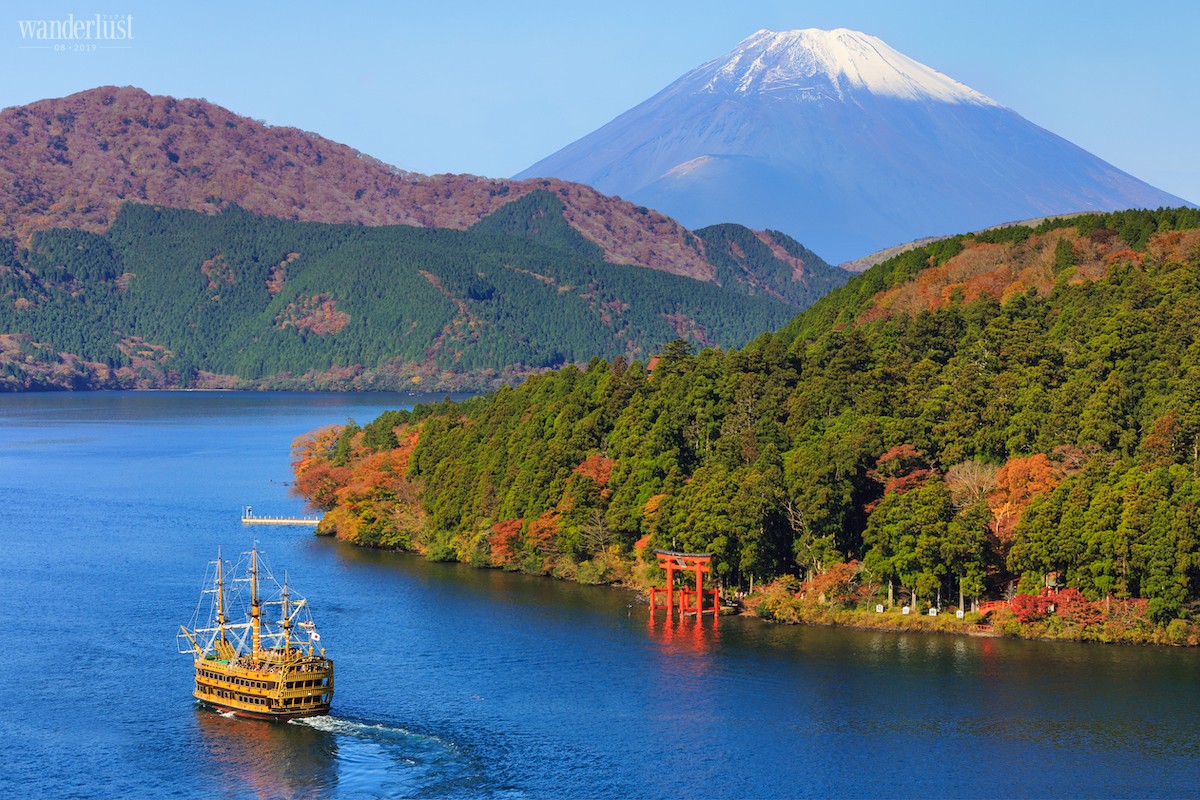
NIKKO: AN UNUSUAL ADVENTURE
Many people know of Nikko as a “religious capital” with a massive pagoda and temple complex located among an array of hundred-year-old trees. However, autumn is indeed the most distinctive season that makes Nikko a magical tourist destination. The Japanese once said “You cannot say that you have seen everything until you visit Nikko” or more specifcally, it may be “until the autumn falls on Nikko”.
Unlike the sweet, romantic vibe in Hakone, Nikko is even more magnifcent on a map, the tourist sites include waterfalls, forests, lakes and vast grasslands that are scattered around Nikko. In my opinion, it takes at least a few days to explore this beautiful land thoroughly. However, because of time constraints, I could only visit Oku-Nikko and the renowned Irohazaka Slope.
From Nikko Station, I bought a free pass for the bus to visit Lake Chuzenji in Oku-Nikko. Tourists could buy round-trip bus tickets depending on your destination, the popular tourist spots are located on a route, so you should buy the return ticket to the furthest bus stop that you want to go to. Senjogahara – the botanical forest and the beautiful trekking grassland of Nikko is the last point on my trip and my departure point is obviously the 48 “divine” windings on the Irohazaka Road.
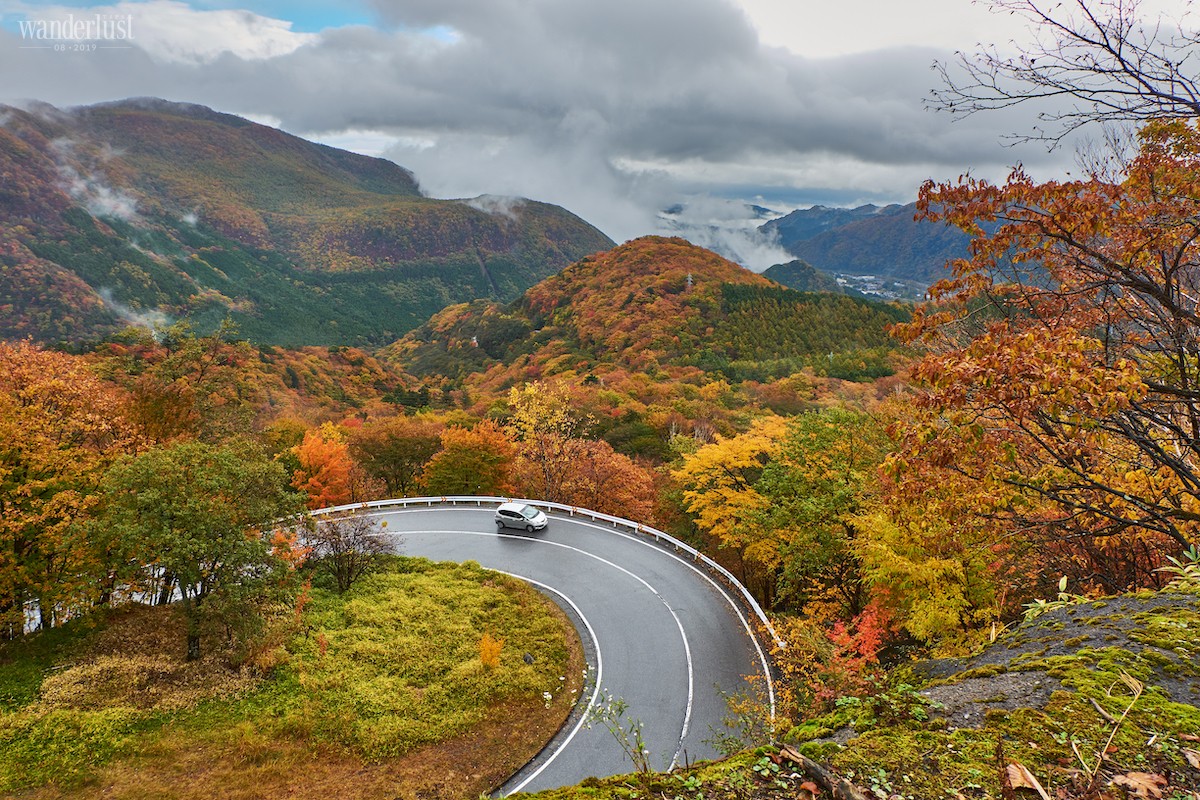
The name of Irohazaka is combined of “I”, “ro” and “ha” – the frst three letters of the former 48-character Japanese alphabet and “zaka” refers to the “slopes”. There are two different roads in Irohazaka. If you want to admire Kegon Waterfall and Ryuzu Waterfall, you could opt for the old road and walk towards the foot of the mountain. Akechidara Plateau on the new road is the perfect choice for those who love to admire the breath-taking panoramic view of the 48 windings nestled in the crimson leaf forest. Both options bring surprises that can confuse everyone, even those who are familiar with the Japanese autumn.
The best time of autumn in Nikko is at the end of October, so sooner than that in Hakone. During this time, the Oku-Nikko area is covered with original, golden red. Sitting on the bus traversing the winding roads of Irohazaka made me feel like I was drifting in another world with vast crimson scenes gliding past the windows. Many likened “climbing” this infamous slope by bus to a wonderful adventure to heaven. Just as passengers have familiarised themselves with the sharp windings, the bus reaches the top of the pass. Looking down from above, all 48 winding roads appear gracefully like colourful lines spread out in the middle of a golden red mosaic. Anyone standing on the top of the Irohazaka slope in autumn can snap their own impressive masterpiece like my favourite travel postcard. In the opposite direction, a group of people were admiring another stunningly beautiful landscape. The majestic Kegon Waterfall passes through the mountain, thunderous streams of water crash down, creating white foam on the colourful valley. In just a second, everyone will understand why Nikko has been dubbed the “autumn paradise” of Asia.
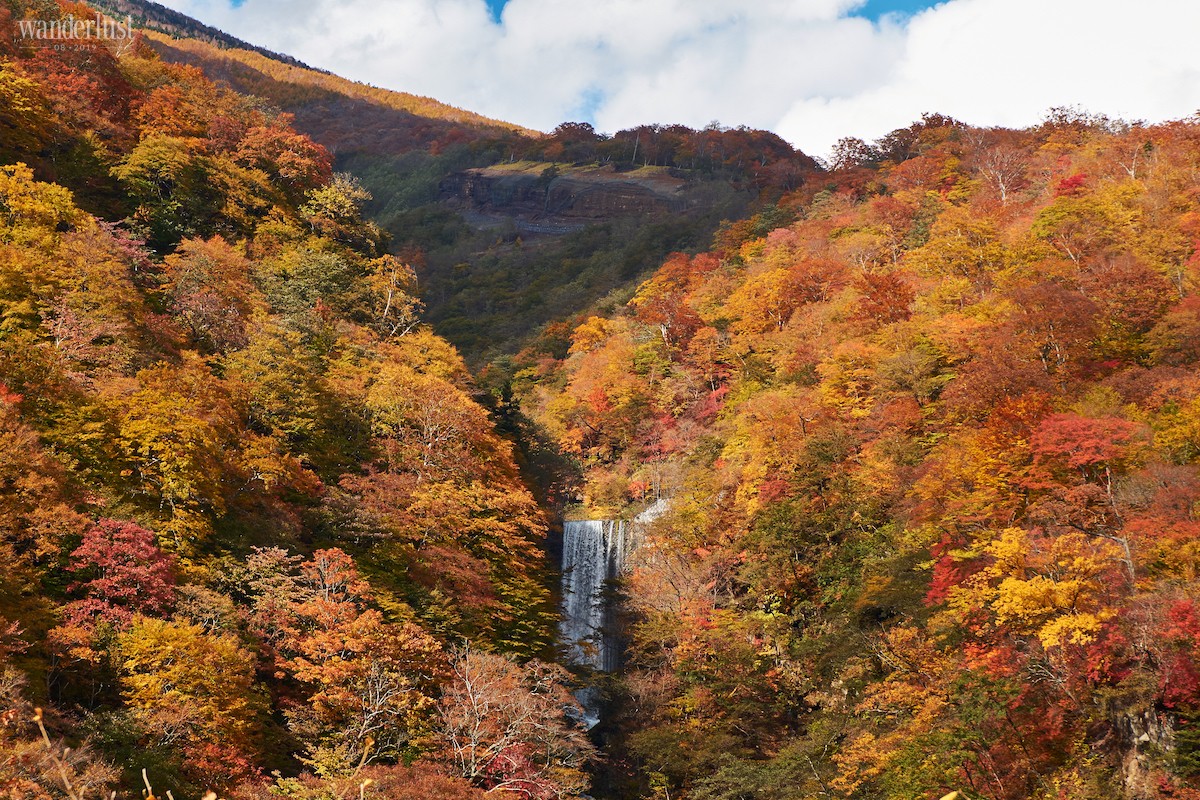
Unlike any other land in Japan, Nikko is truly a paradise for spectacular visual experiences, but it sometimes seems a little remote, making us feel like we are part of an excellent artistic masterpiece. If you are interested in watching the stunningly beautiful landscape whilst contemplating how nature graced the land of the rising sun, stroll along the trekking road that runs through Senjogahara Marshland. The shallow marshland is usually dry in the autumn and is covered with waist high yellow grasslands. Under the bright sunshine in the autumn afternoon, the blades of dried grass become iridescent. The silvery mountains embrace each other silhouetted on the horizon and the long row of yellow cedar trees stand out against the blue sky and lush green mountain ranges.
The Senjogahara grasslands boast a peaceful ambience in the afternoon, sometimes the sun cast long shadows of trekkers in white sportswear and high boots across the narrow road, amid the vast grasslands. While I was following their footsteps, I thought we might actually go to another planet, where its surface is flattened peculiarly and covered with the yellow felds along with strangely shaped mountains and hills. The suction here is low, so everyone had quite a bounce underfoot.
After returning from Nikko, I didn’t see the red leaves elsewhere in Japan. Nikko changed my feelings about autumn. I mean this is fathomable because I am sure that anyone would also change their mind after such an epic expedition.
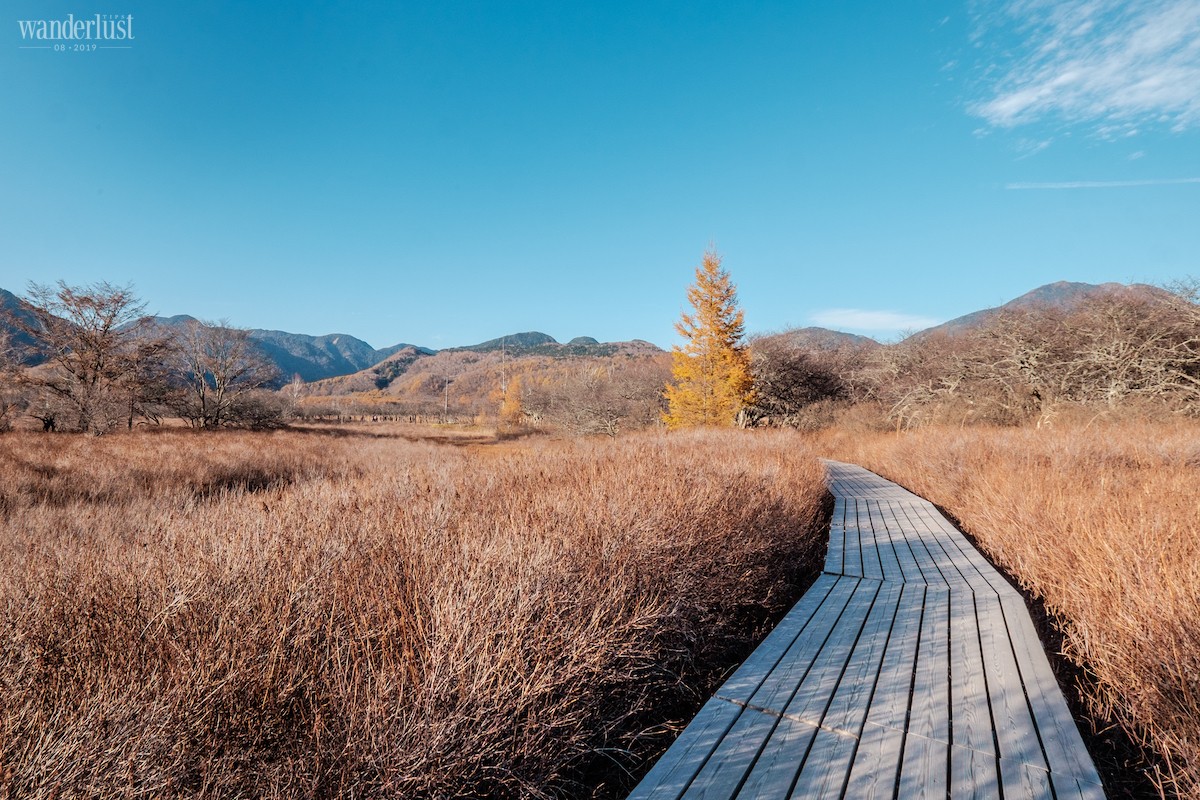
W.TIPS
![]()
BEST TIME TO TRAVEL
In Japan, the leaves start to turn from late October to late November. However, each destnaton with different landscapes will have different coloured leaves. Follow the weather forecast in Japan to check out the best tme to view the red leaves.
![]()
MOVING
The popular tourist destinatons ofen have free pass tckets for daily use. For the famous areas where the small atractons are located on a road, you should buy a free pass to move comfortably and save tme each way. (For example, Hakone has a 2-day or 3-day free pass from Shinjuku Staton, in Tokyo; Nikko has a 1-day or 2-day free pass from JR Nikko Staton).
![]()
FOOD AND DRINK
In Japan, restaurants are available in almost all the tourist areas, with an array of popular and scrumptous Japanese dishes such as ramen, eel rice, beef rice in stone bowls, udon and rice balls. Additonally, 24/7 convenience stores are very popular, even in small towns. It is important to note that in the mountainous cites and towns such as Hakone and Nikko, shops and eateries close very early, ofen before 7pm. Thus, organise your tour itnerary to have dinner before their closures.
![]()
SHOPPING
In Japan, each tourist destnaton will have souvenir shops that sell regional specialtes such as milk cakes, lemon sweets and packaged soba noodles in Nikko. In Hakone, you can visit the souvenir shops with products specializing in the famous Evangelion cartoon brand, Hakone was also the background to many scenes in flms. Local souvenirs and cuisine are really the perfect gif afer such the trips.
Wanderlust Tips

